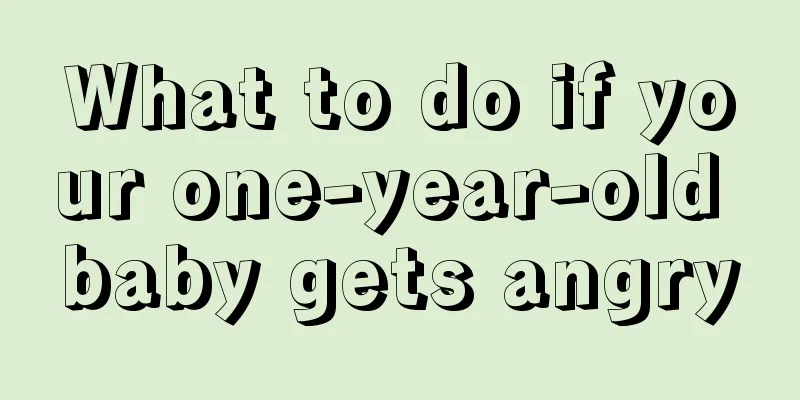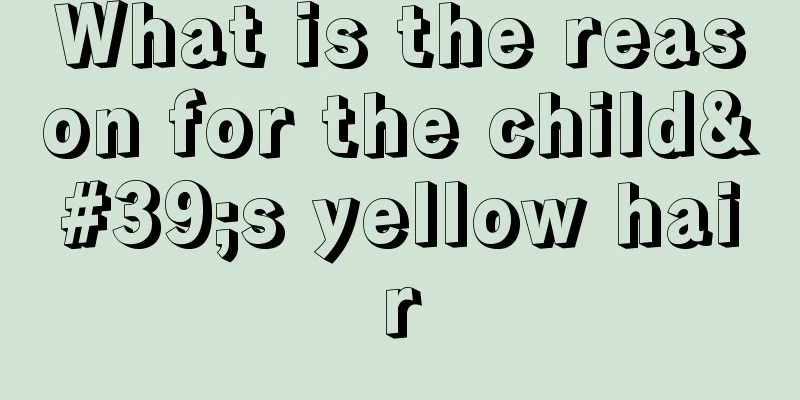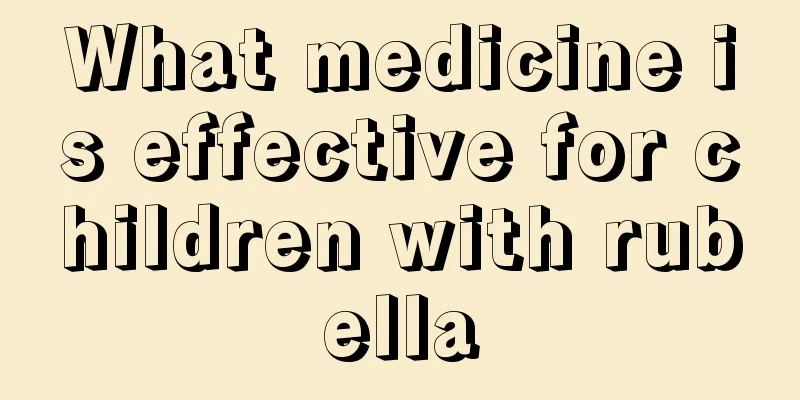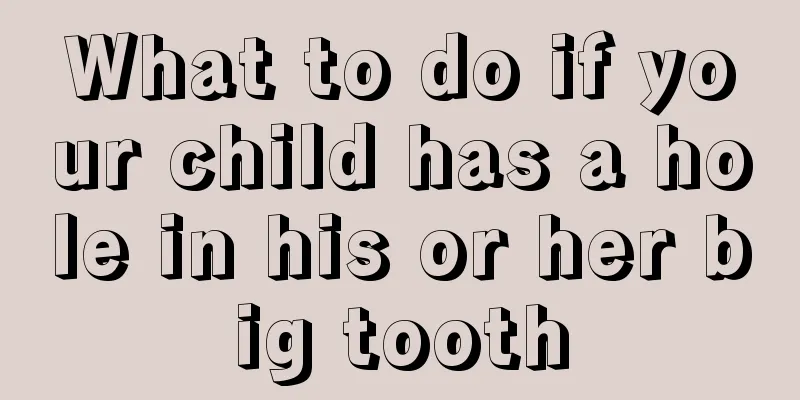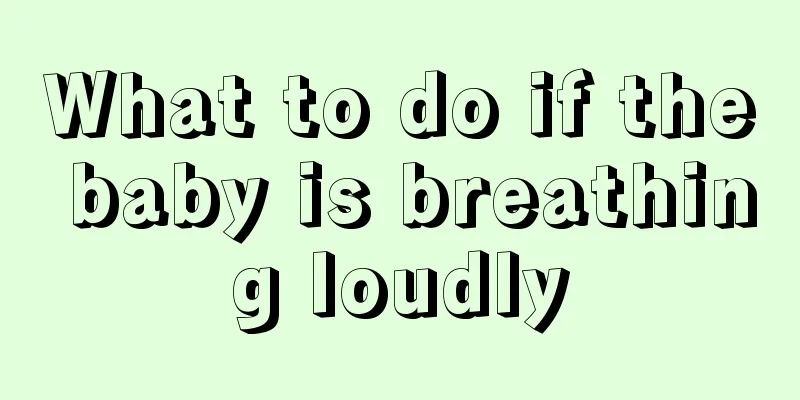What to do if a child has a fever caused by bacterial infection
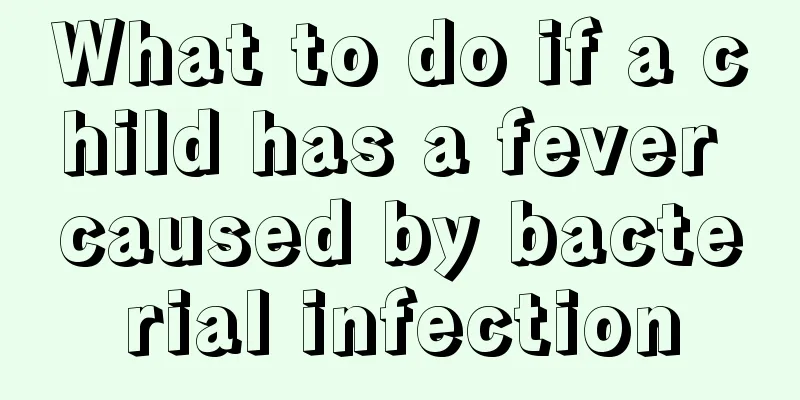
|
Some parents become very nervous when they find their children have a fever, and they give their children medication without knowing the cause. In fact, many times it is the children or parents who are not paying attention, which causes bacterial infection and leads to fever. So, how do we identify the cause of a fever? How do we alleviate and treat it? Let’s take a look with the editor. What is fever? That is, an abnormal increase in body temperature. Under normal circumstances, children's body temperature will fluctuate slightly throughout the year and even within a day. In most cases, as long as the child's armpit temperature is less than 37.5℃, it is considered normal body temperature. The younger the age, the worse the ability to regulate body temperature and the greater the temperature fluctuations. Fever in children is a defensive response of the body to a variety of infectious factors (various infectious factors include: bacteria, viruses, fungi, mycoplasma, etc.). Among them, respiratory tract infections are the most common, and viruses are the most common cause of respiratory tract infections. Therefore, parents should not use antibiotics directly just because Professor Hou said that "fever is caused by infection." Everyone knows that antibiotics are used to treat bacterial infections. Some parents asked, fever is always a manifestation of disease and it has many harmful effects on the human body. Yes, if the fever persists or a high fever occurs, the body's ability to regulate temperature will decrease, and may even affect other body functions such as digestion and cardiovascular function. How can parents identify the cause of a child's fever? Since fever is a symptom of disease, how do we identify what disease causes the fever? The editor introduces some simple identification methods for common diseases: 1. Cold and fever: The body temperature may be high or low, often accompanied by nasal congestion, runny nose, sneezing, mild cough, and pharyngeal congestion. 2. Tonsillitis: Most of the time it is a simple fever, with red and swollen tonsils and suppuration, and there may be a slight nasal congestion. 3. Pneumonia: The four major symptoms of fever, cough, wheezing and sputum are all visible. It is a viral pneumonia that is common in winter and is a very dangerous type of pneumonia in children. 4. Children with fever accompanied by vomiting and diarrhea are mostly suffering from enteritis, autumn diarrhea, and summer dysentery. In the summer, if a child has persistent high fever and abdominal distension, even if he or she does not have diarrhea temporarily, the possibility of toxic dysentery should be ruled out. 5. Many infectious diseases can cause fever, such as chickenpox, measles, roseola infantum, scarlet fever, etc. Especially in winter and spring, we should pay attention to the fever of these diseases. There is another type of fever that parents fear the most, and that is febrile convulsion in children. Convulsions in children caused by high fever are called febrile convulsions. It is the most common cause of convulsions in infancy and childhood. It is more common in children aged 6 months to 3 years and rare after 5 years old. About 50% of children have a similar medical history in their parents or close relatives. Viral upper respiratory tract infections are particularly common in children. Therefore, high fever must be controlled as soon as possible! No time to waste! Fever in children: Misunderstandings and correct ways to deal with it Many parents get nervous when they see their children have a fever, so there are some misunderstandings about how to reduce fever: One is the abuse of antipyretic drugs. For low fever, doctors use antipyretic drugs, and some even use hormones, or repeatedly use multiple antipyretics. In severe cases, the child's body temperature may be too low, and he or she may sweat and become dehydrated. The second is to use antibiotics to reduce fever. I think that giving an IV drip will help reduce fever faster. The third is that some people think that if a child’s temperature fluctuates, the treatment is ineffective. In fact, it is normal for the temperature to fluctuate several times during an illness. In view of these phenomena, Professor Hou tells you some simple ways to deal with children's fever: 1. For low to moderate fever below 38.5℃, in addition to treating the original disease, give the child more water and keep the bowel movements smooth. There is no need to use antipyretic drugs. 2. If the body temperature is >38.5℃, some antipyretic drugs may be used as appropriate. Such as Xiao Chaihu Granules, Chaihu Oral Liquid, Tylenol, and Baifuning. 3. If your body temperature is >38.5℃, you can also take a hot bath to cool down. 4. For high fever or extremely high fever, take antipyretics and take a hot bath until you sweat. Do not wear too thick clothes or blankets, as they will affect the heat dissipation and keep the fever from going away. The editor reminds mothers not to panic too much if their children have an occasional fever. In fact, a moderate fever can stimulate the body's multiple immune responses and help recovery from the disease. So, in a sense, fever is also a good thing. However, if the fever is not relieved by the above methods, you need to go to the hospital as soon as possible to check the cause and receive treatment. |
<<: What are the symptoms of bacterial infection in children?
>>: How to deal with bacterial infection in children's cough
Recommend
What's wrong with a one-month-old baby who hasn't had a bowel movement for two days?
The baby's physique varies from person to per...
How long does it take for a newborn to stop spitting up milk?
Every baby's physical condition is different....
How do children reduce phlegm? This diet is better than medication
Now, because the flu is too frequent, various pro...
How to solve the problem of stuttering in children?
If a person stutters when speaking, he will encou...
What should I do if my child has a fever for a day and a night?
If a child has a fever for a day and a night, it ...
What are the symptoms of rhinitis in children?
The incidence of rhinitis is particularly high, e...
What causes dizziness in children?
In the process of taking care of children, many p...
Why do children's cervical lymph nodes swell?
Children are relatively weak and may experience s...
Can children eat pig blood?
We know that children's diet is different fro...
What are the benefits of cod liver oil for infants and young children?
During the period of rapid growth and development...
Nine taboos that babies should not violate in their diet
During the growth and development stage of babies...
Children have a fever and fart a lot and smell bad
Many children will feel that they fart a lot and ...
What are the symptoms of babies with brain dysplasia?
Children's brain maldevelopment is also a kin...
At what age can babies eat the whole egg yolk?
Regarding eggs, we all know that egg whites conta...
What causes testicular pain in boys?
Some growing boys may feel testicular pain. In fa...

